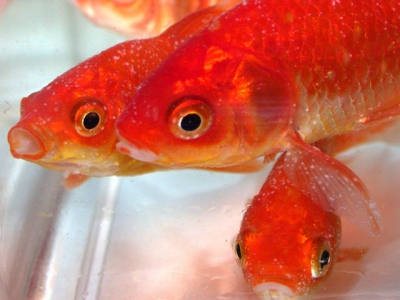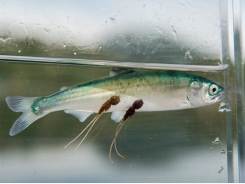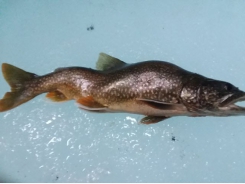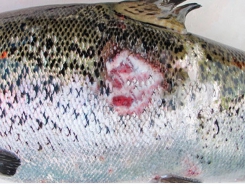Fish disease guide - White Spot Disease

What is it?
White spot is a contagious parasitic disease of fish. Caused by Ichyophthirius multifilis, the parasite infects the fish after moving from the bottom of the pond. The parasite attaches itself to the fish, moving under the skin where it feeds on cells and body fluids. Later in the parasites life cycle it moves out of the fish and attaches itself to pond material where it repeatedly divides itself into 1000 more. These then hatch and the process begins again.
The parasite causes damage to fish tissue causing bacterial and fungal infections
Where and When Might it Occur?
The disease affects most fish species but is most common in carps.
The parasites are often introduced through infected fish or pond equipment.
Changes in environmental conditions such as, the introduction of lower temperature water to that of the pond or tank can also cause the release.
Diagnosis
The illness is first detected through behavioural changes in the fish. Fish will often be seen to rub themselves against stones as the parasite enters the skin.
Disorientated swimming close to the surface or staying close to the bottom and tightly folded fins are also observed.
In the later stages, small white cysts will start to appear over the fish, including the gills. These are roughly the size of a grain of salt.
Control/Treatment
To stop the parasites from being released, zinc-free malachite is used in the pond (0.1ppm). Instructions on use must be followed carefully to prevent toxicity.
To prevent the disease it is advised to quarantine new fish for two weeks before introduction.
Related news
Tools

Phối trộn thức ăn chăn nuôi

Pha dung dịch thủy canh

Định mức cho tôm ăn

Phối trộn phân bón NPK

Xác định tỷ lệ tôm sống

Chuyển đổi đơn vị phân bón

Xác định công suất sục khí

Chuyển đổi đơn vị tôm

Tính diện tích nhà kính

Tính thể tích ao




 Salt shown to improve arapaima farms
Salt shown to improve arapaima farms  Fish disease guide - Amoebic gill disease (AGD)
Fish disease guide - Amoebic gill disease (AGD)